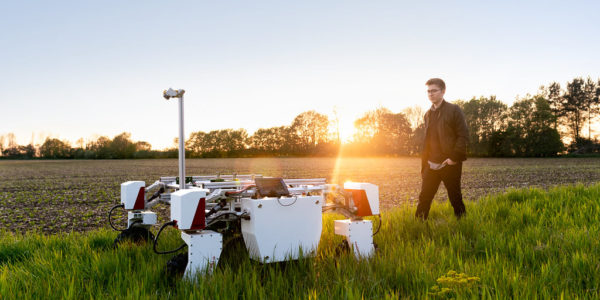American agriculture is ripe for automation. Fewer young people choose to go into the field, a drop in immigrants over the past few years led to even more labor shortages, and automation is finally reaching the point where it’s realistic for agriculture.
Profits in agriculture have also been volatile. Supply chain issues, the pandemic, and other macroeconomic factors have made farming tough in recent years. Automation holds the promise not just to reduce costs and increase profits but to keep farms solvent.
Agritech
Automation on farms has stepped up significantly. Automatic milking machines, irrigation drones, harvesting robots, and produce-sorting machinery all on the market now.
Automation in agriculture reduces human workers’ involvement in dirty, dangerous, and dull jobs. It can reduce dependence on farm labor by improving efficiency and reduces costs associated with hiring workers.
Using robotics and automation is not only cheaper, but it also allows manufacturers to be more flexible with their production cycles. This leads to increased profit margins for those companies that adopt this technology first., especially when a company can scale up or down quickly in response to changes in demand or to supply chain issues.
In the long run, it may be the best way to make sure there’s enough food to go around, at accessible prices.
Effects upon the community
However, communities can lose their identity as agribusinesses move toward automation. As farms get larger and fewer, with fewer human workers, the communities built around the farms contain fewer people. As the population dwindles, they may lose local schools, churches, and shopping venues.
Losing jobs that many people consider undesirable, and replacing those jobs with clean, high tech jobs may seem like a good solution to the problem of a shrinking work force. But the ripple effects may be rough on farm communities.
Civil Eats compares the changes in agriculture right now with the changes in mining. Jobs run mining were dangerous and unpleasant. Instead of striving to improve working conditions, mine owners chose automation. The result was increased productivity for mine owners…but the collapse of towns built on mining.
Solutions
Is it possible to build a sustainable, community-oriented lifestyle around an automated farm? Automation is not a panacea; rather, it requires careful planning and sharing of responsibilities across the farm’s stakeholders
One thing is for sure: excellent motion control systems will be needed. When your Indramat systems need support and service, we can help.



